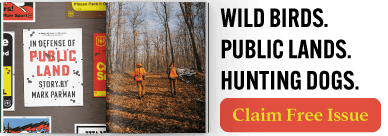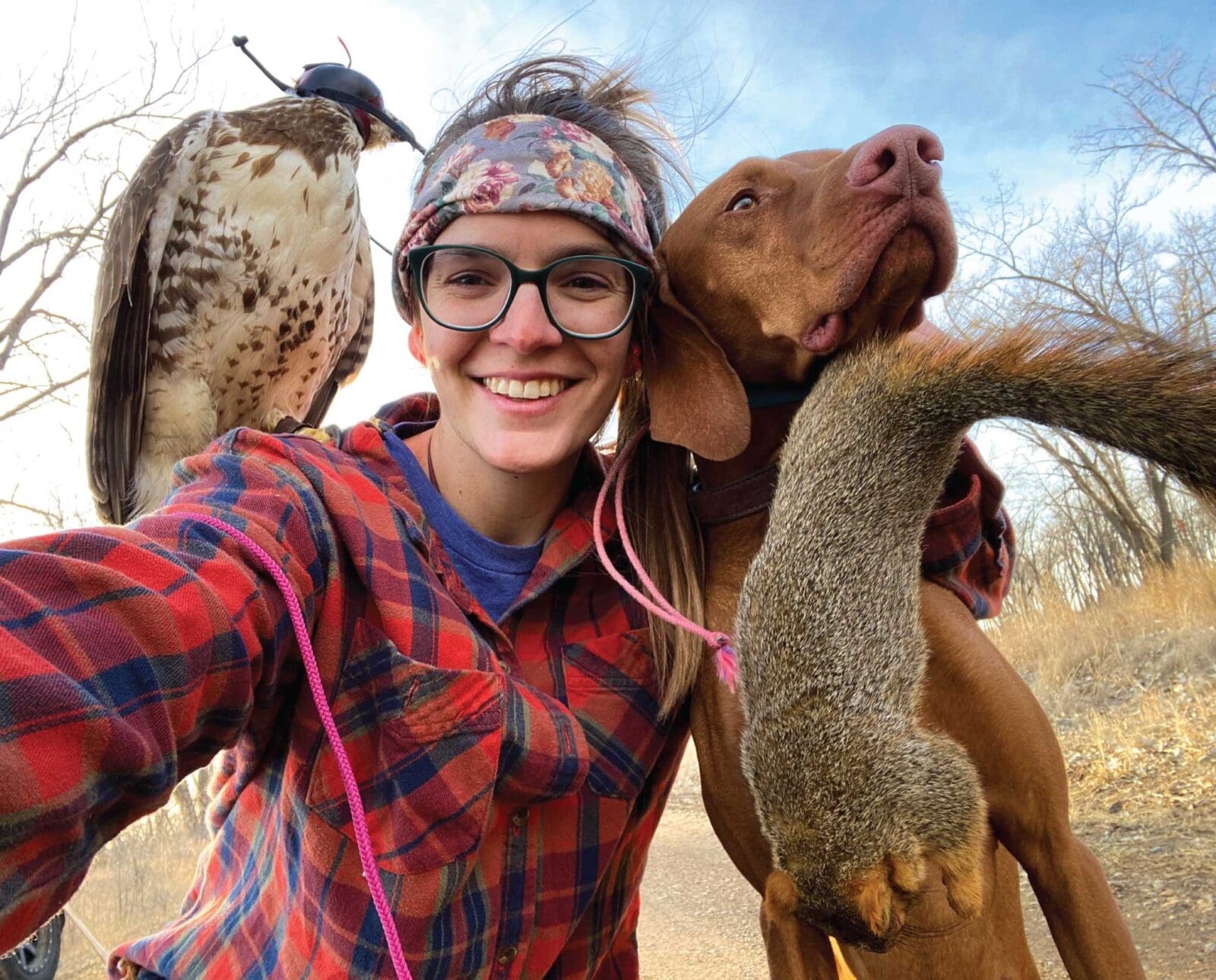
Hannah is a full-time dog trainer living in Turtle Lake,…
Learning to small game hunt alongside a bird dog and a bird of prey
My first bird dog, Cooper, and I had just begun our journey into the uplands when I learned about falconry. Initially, I found falconry through social media. Online, I saw folks using various species of birds to hunt multiple species of game, including goshawks on quail, red-tail hawks on squirrels, and falcons on prairie grouse. What set falconry apart from any other sport I enjoyed from afar was seeing the various ways falconers incorporated dogs into the hunt.
Listen to more articles on Apple | Google | Spotify | Audible
So many different breeds of dogs are used to achieve success in the field, including Dachshunds, terriers, sighthounds, and bird dogs. After creeping on falconry social media accounts, I took a few trips to the desert to watch falconers fly their birds over Vizslas, setters, terriers, and Brittanys on quail. That was that; I was hooked on falconry. Hunting upland game with a bird of prey over my dog was written in the stars of my future.
Falconry is the hunting of wild animals in their natural state and habitat using a trained bird of prey. The key word here is “hunting.” While there are many avenues a person can navigate to acquire a bird of prey, if the bird’s owner isn’t hunting, it cannot be considered falconry.
Many bird species are used to hunt different prey species, but each bird is tailored to a specific type of prey. For example, red-tailed hawks are mainly used to hunt squirrels, cottontails, and jackrabbits. Falcons like peregrines and prairie falcons are used to hunt ducks and upland game. Falconers use goshawks and Cooper’s hawks to hunt cottontails, squirrels, jackrabbits, upland game, and ducks. Kestrels are used to hunt starlings and house sparrows. No matter what small game species you want to hunt, there is a raptor species that’s specialized in hunting your quarry of choice.
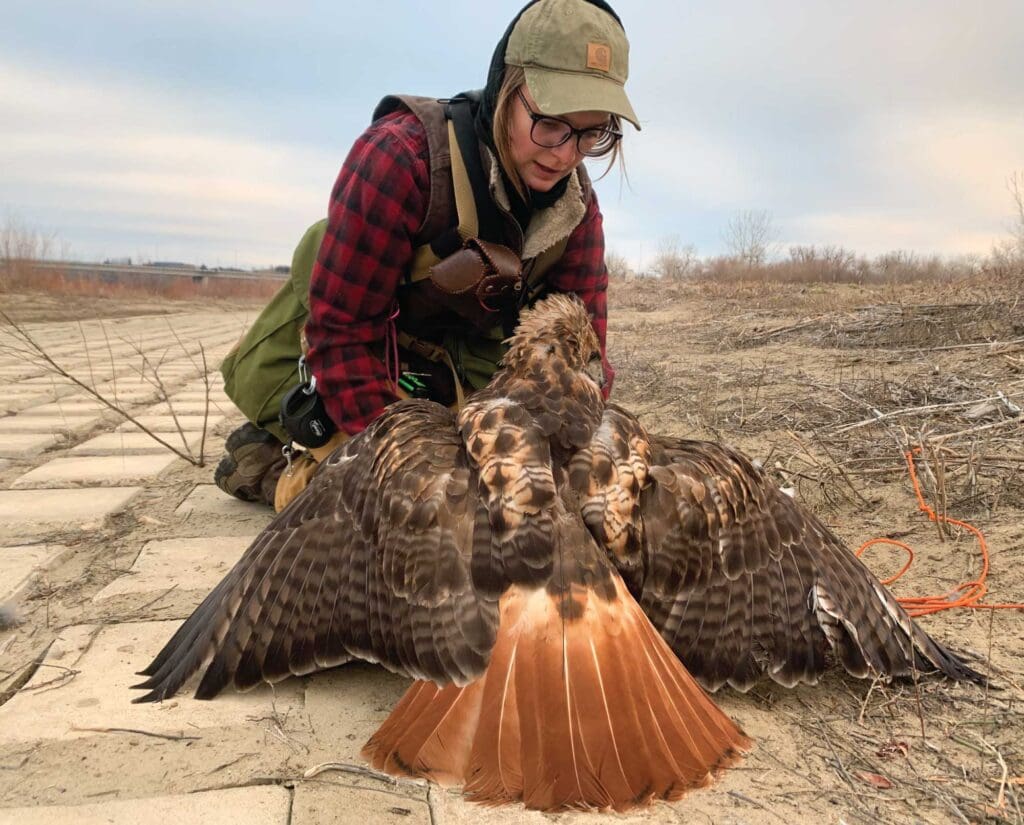
Becoming an Apprentice Falconer
After reading more about the requirements to be a falconer, I knew the journey to the uplands alongside a bird of prey would be long. A falconer must spend their first two years as an apprentice falconer. An apprentice falconer is often legally restricted to flying either a red-tailed hawk or an American kestrel, which are not typically capable of catching upland game. This apprenticeship meant I would need to fly a red-tailed hawk on squirrels and rabbits for at least two years before upgrading to flying a goshawk or a falcon on upland birds.
Becoming an apprentice falconer can vary from state to state. Still, generally, the initial process has three steps: secure a sponsor, pass an exam, and have your facilities and gear inspected by your state of residency. Fortunately, I secured a sponsor right away who agreed to keep me on the right track throughout the two years of my apprenticeship. After one year of studying, I took the exam issued through the Texas Parks and Wildlife Department and passed. Soon after passing the exam, a game warden inspected my apartment and deemed it suitable to house a raptor. A few days later, I was issued my apprentice falconry license, which included permission to trap a wild bird of prey. Next, I trapped a juvenile red-tailed hawk and began training my first falconry bird, Yue.
Although I had a hawk in my possession, I could only consider myself a falconer once I caught my first head of game, or after catching quarry with my bird for the first time. Five weeks after pulling Yue off the trap, we had our first team-caught squirrel in her talons; I was finally a falconer. Yue and I went on to catch 23 head of game our first season together and 13 during our second season. The game we caught was a combination of fox squirrels, gray squirrels, and cottontails.
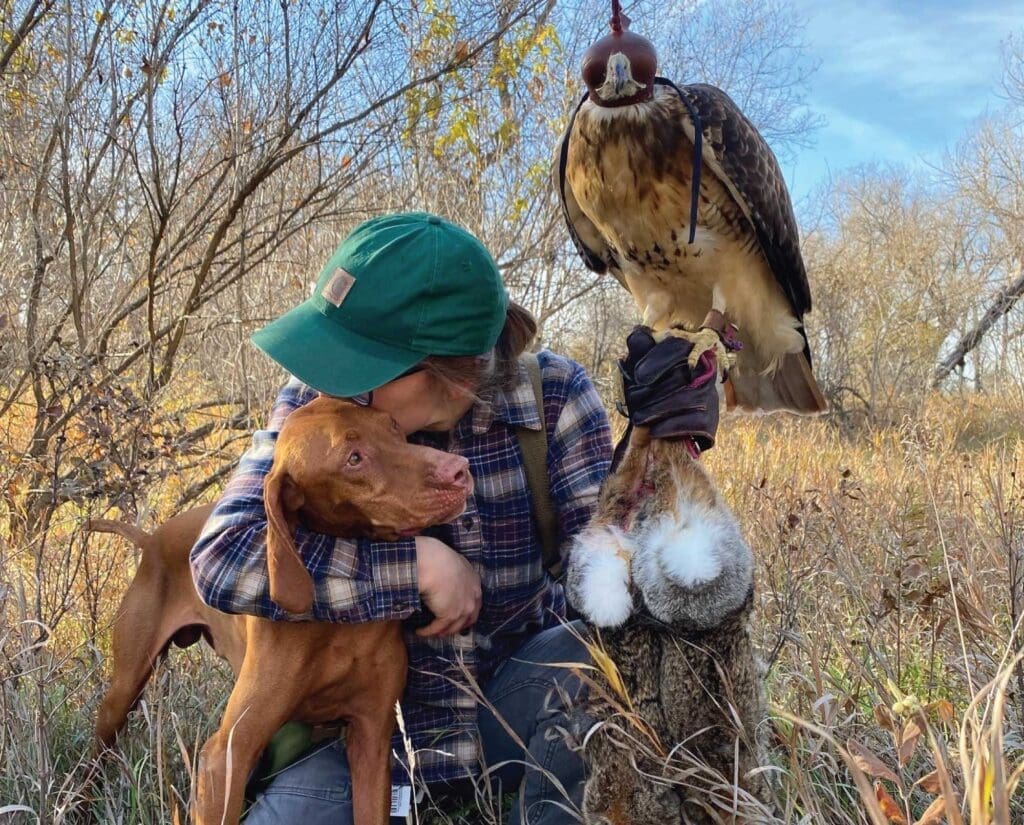
Using Hunting Dogs in Falconry
As previously mentioned, the component of falconry that was the most appealing to me was the incorporation of hunting dogs. I already owned Cooper when I trapped my first falconry bird. He was from a Vizsla pet breeder in Oklahoma. I bought him with no intention of hunting him; I wanted a Vizsla solely because of their exercise requirements and low grooming maintenance. Although I had no background in upland hunting, I grew up waterfowl hunting and had wing-shooting experience. So, when I watched a 10-week-old Cooper point his toys before jumping on them, I thought, Well, if he can find birds, I could probably shoot them. That singular thought catapulted me into the upland world, eventually leading me to falconry.
Cooper is a decent bird dog. We didn’t have much access to hunting when he was young, especially after we moved to Texas shortly before his second hunting season. He certainly lacked development. But when I began incorporating falconry, I learned that Cooper can do anything. I’ve watched him find and tree squirrels, standing at the base of the tree and barking to keep the squirrel from coming down and finding a hole. He has pointed and coursed rabbits to keep them moving so Yue had a chance to catch them. I’ve found him squeezed into a hollow log, cornering a rabbit, and eventually creating enough pressure to cause the rabbit to bail out right under my bird. Cooper had produced so much game for Yue, she was more in tune with him than me. She would take off towards him anytime she heard his bark and followed him around the woods more than she followed me.
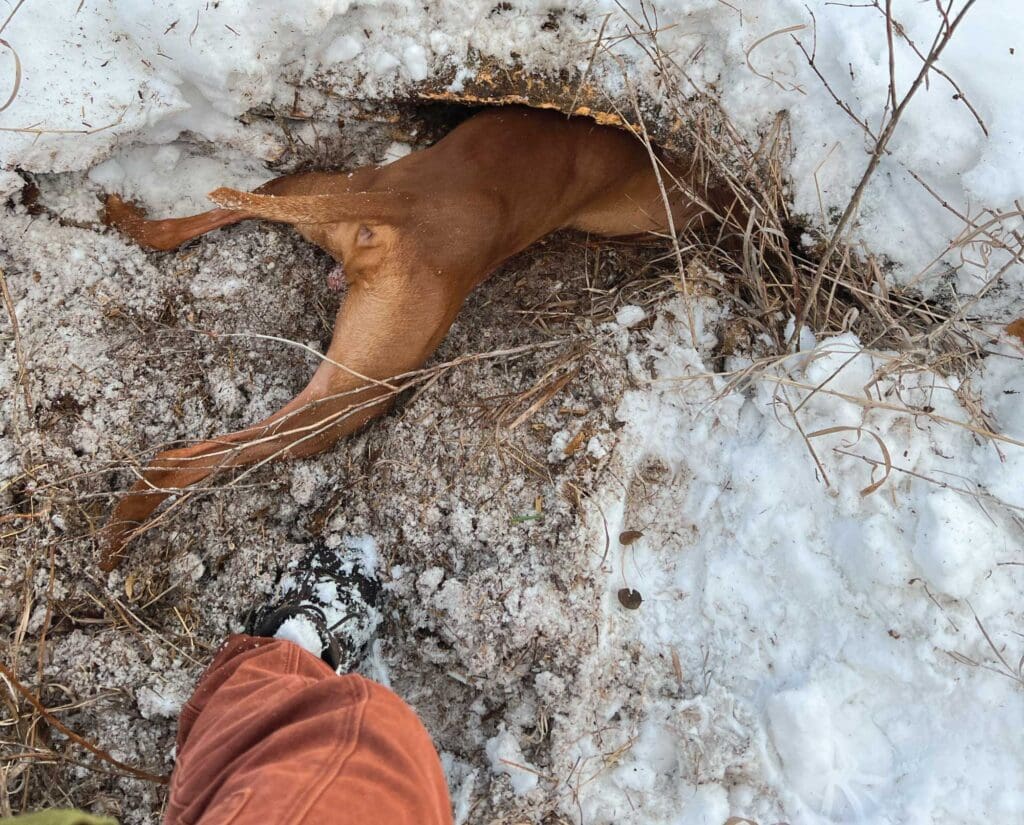
Joining the Falconry Community
If you’re going to call yourself a falconer, you’d better be hunting. Not casually hunting, but hunting your toosh off. Thankfully, the falconry community excels at keeping each other accountable.
To be a successful falconer, your lifestyle must be flexible enough to allow for outings with your bird at least four or five times a week. Falconry is not a sport for the weekend warrior. These birds deserve to be put in their natural environment and set up for success as much as possible. Because of these expectations, falconers hold each other to a high standard, particularly in the online community. This can be a lot of added pressure and, if you lack thick skin, can damage your confidence. But as someone who struggled to catch game with Yue during our second season, I learned that if you give your best effort to set your bird up for success, everyone is incredibly supportive despite a low head count.
Falconry is not a sport for those with thin skin or lacking passion. When looking at every successful falconer, you’ll see they have one thing in common: an obsession with the sport. You must live and breathe falconry to be successful. If you are interested in hunting with birds of prey and are curious if it will fit your lifestyle, join your state’s falconry club and go out hunting with your local falconers as often as possible. Create and maintain relationships with seasoned falconers before asking them to be your sponsor. Don’t be surprised if the process to get started takes well over a year or two. If you are committed, passionate, and make time for the sport, the falconry community will accept you with open arms.
This year, I upgraded to a general falconer. This means I am legally allowed to fly all species of falconry birds. I can officially begin my journey to the uplands alongside a hawk and bird dogs, and I couldn’t be more excited.
Hannah is a full-time dog trainer living in Turtle Lake, North Dakota. She enjoys hunting sharptail grouse behind her vizslas and pheasants behind her spaniels. She is a falconer and hunts rabbits and squirrels with her red-tailed hawk. In the summers, she enjoys training for field trials and fishing the lakes of central North Dakota.

